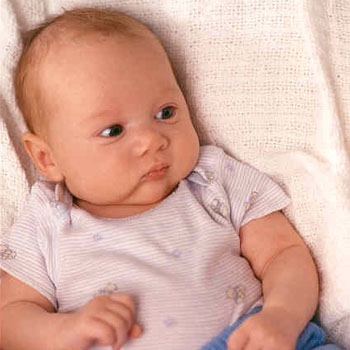Babies as young as 2 to 3 months have shown some form of depth perception. One method researchers have used to study babies and depth perception is through using a “visual cliff.” A visual cliff is a glass platform raised a few feet off the floor. One-half of the cliff has a shallow side, where there is a checkerboard pattern directly underneath the glass. The “deep end” of the cliff shows the pattern several feet below, creating the impression of a drop-off. Researchers found that infants as young as 2 months showed changes in heart rate when lowered face down over the shallow and deep ends of the visual cliff. Specifically, the infants’ heart rates decreased when they were lowered over the deep end and were unchanged when over the shallow end. Note that this experiment does not show that infants this young are afraid of the deep side. Usually, a decrease in heart rate indicates interest, while fear leads to an increase in heart rate. The experimental differences in heart rate indicate that the infants could perceive a difference between the deep and shallow ends of the visual cliff.
References
Campos, J. J., Langer, A., & Krowitz, A. (1970). Cardiac responses on the visual cliff in prelocomotor human infants. Science, 170, 196
Spillman, L., & Werner, J. S. (Eds.), (1990) Visual perception: The neurophysiological foundations. San Diego, CA: Academic Press.

